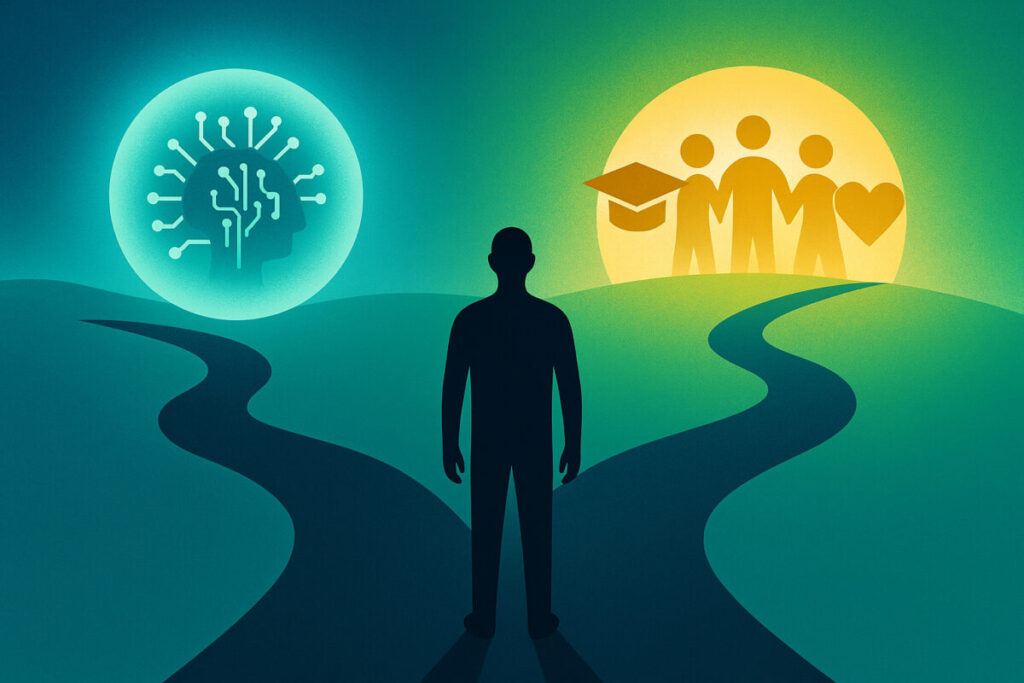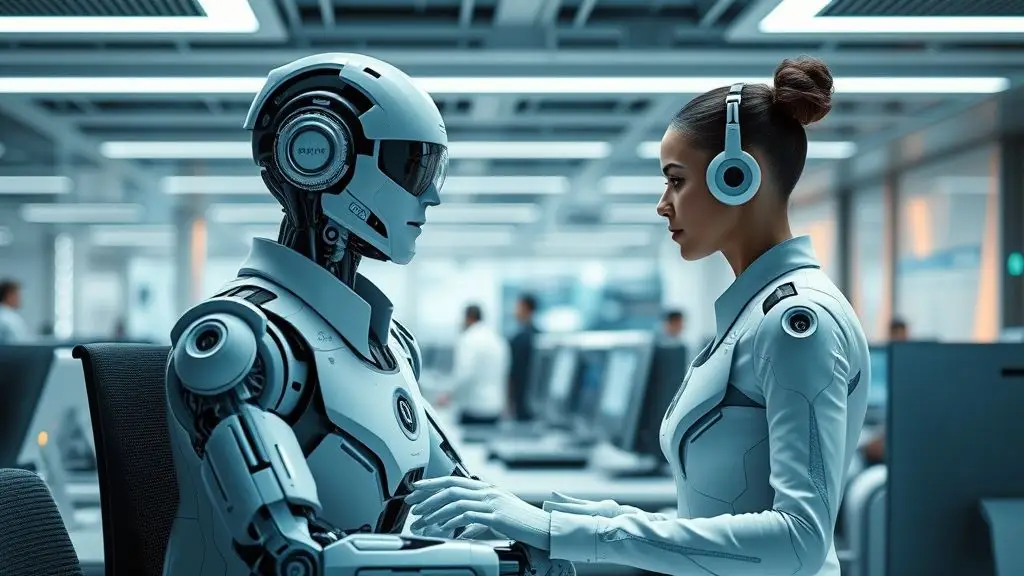The Impact of Technological Innovation on Jobs: 6 Ways to Navigate Job Displacement in AI Era – The rise of artificial intelligence (AI), automation, and machine learning is reshaping industries, economies, and the global workforce.
These innovations are driving unparalleled productivity, reducing costs, and opening new business opportunities. However, they also present a major challenge: job displacement. As machines take on tasks previously performed by humans, entire job sectors face disruption. While some jobs evolve or shift, others disappear entirely. This raises important questions:
- What will happen to workers in industries most affected by automation?
- How can employees and businesses prepare for this transition?
- What strategies can governments and corporations use to mitigate the impact?
This article explores the changing nature of work, job displacement causes, historical lessons, and practical solutions to help individuals and businesses navigate the future of work.
Table of Contents

1. Artificial Intelligence – The Changing Landscape of Work
Technology has always been a double-edged sword—it creates efficiency but also eliminates jobs. With AI, robotics, and automation accelerating, many traditional roles are at risk.
1.1 Industries Most Affected by Automation
- Manufacturing: Robots dominate assembly lines, reducing the need for human labor.
- Retail & Customer Service: Self-service kiosks, AI chatbots, and automated checkout systems are replacing workers.
- Transportation & Delivery: Self-driving vehicles and drone deliveries threaten truck drivers and couriers.
- Finance & Accounting: AI-powered analytics can process financial reports and transactions faster than humans.
- Healthcare: AI-driven diagnostics and robotic surgeries are changing traditional healthcare roles.
1.2 The Productivity vs. Job Loss Dilemma
✔️ Advantages:
- Boosts efficiency and cuts costs.
- Enhances decision-making through AI-driven insights.
- Speeds up production, logistics, and operations.
❌ Disadvantages:
- Eliminates routine jobs, especially in low-skill sectors.
- Widens the skills gap, leaving workers unemployed.
- Increases economic inequality if only highly skilled workers benefit.
While automation replaces certain jobs, it also creates new opportunities. The challenge is ensuring workers can transition into these emerging roles.
2. How Job Displacement Happens
Technological advancements replace human labor in two key ways:
2.1 The Rise of Automation
- Manufacturing: Factories are using robots for precision-based tasks, cutting human jobs.
- Retail & Customer Service: AI-powered virtual assistants now handle customer queries.
- Food Industry: Automated cooking systems and robotic waiters are being introduced.
Automation primarily impacts repetitive or predictable tasks, meaning jobs that require creativity, problem-solving, or emotional intelligence are safer.
2.2 AI & Machine Learning’s Expanding Role
Unlike traditional automation, AI can learn and adapt, allowing it to replace complex tasks once considered human-only.
Examples:
- AI-powered financial advisors help clients manage investments.
- AI-driven medical diagnosis tools analyze patient symptoms better than doctors.
- Self-driving vehicles threaten millions of transportation jobs.
The key challenge? AI is not just replacing physical labor—it’s replacing cognitive work as well.
3. Lessons from History: What Can We Learn?
History shows us that technological disruptions always eliminate jobs—but also create new ones.
- Industrial Revolution (1800s): Machines replaced manual labor, but created factory jobs.
- Digital Revolution (1990s–2000s): Computers replaced clerical jobs, but created software engineering roles.
Key Takeaways from History:
- Technology-driven change is inevitable.
- Resistance to change leads to economic stagnation.
- The workforce must adapt to new opportunities.
The challenge today is ensuring that workers transition into new roles fast enough to avoid long-term unemployment.
4. Strategies to Overcome Job Displacement
To minimize job losses and prepare for the future, governments, businesses, and individuals must take proactive steps.
4.1 Retraining & Upskilling
- Invest in STEM (Science, Technology, Engineering, and Math) skills.
- Learn AI, coding, and data analysis—these are the jobs of the future.
- Encourage lifelong learning through online courses and certifications.
4.2 Strengthening Social Safety Nets
- Improve unemployment benefits to support displaced workers.
- Ensure affordable healthcare and education for job seekers.
4.3 Exploring Universal Basic Income (UBI)
- UBI offers a financial cushion during job transitions.
- Countries like Finland and Canada have tested UBI to see if it helps displaced workers.
4.4 Worker Unions & Advocacy
- Unions must negotiate fair wages and job security in the AI era.
- Encourage businesses to reskill workers instead of laying them off.
4.5 Public-Private Partnerships
- Governments and companies should collaborate on retraining programs.
- Tech firms should fund AI education programs to prepare workers.
4.6 Flexible Work Models
- The gig economy and remote work offer new job opportunities.
- Hybrid work arrangements allow employees to learn and adapt faster.
4.7 Human-Centric Automation
- Companies should use AI to enhance human productivity, not replace jobs.
- Technology should support workers, not eliminate them.
5. The Bigger Picture: AI, Automation & Society
The effects of automation go beyond the workplace—they impact society and the economy in major ways.
5.1 Income Inequality Worsens
- Wealth concentrates among tech-driven businesses.
- The rich get richer, while displaced workers struggle.
5.2 The Digital Divide Grows
- Those without access to education and technology fall behind.
- Emerging economies face greater job losses due to lack of retraining.
5.3 Bias & Ethical Concerns in AI
- AI can reinforce biases in hiring, law enforcement, and decision-making.
- Ethical AI development is crucial to ensure fairness.
6. The Future of Work: What’s Next?
Looking ahead, automation and AI will continue to evolve. The question isn’t whether jobs will change—it’s how we prepare for it.
🔑 Key Takeaways:
- Tech will keep advancing—preparing for change is essential.
- Workers must embrace lifelong learning to stay competitive.
- Businesses must prioritize ethical AI development to ensure fairness.
By embracing innovation, investing in education, and supporting displaced workers, we can create a future where technology enhances lives rather than disrupts them.
💬 Which feature excites you the most? Comment below!
💡 Stay ahead of the future! Follow us on:
🔹 Facebook: https://www.facebook.com/Tectivor
🔹 LinkedIn: https://www.linkedin.com/company/tectivor


